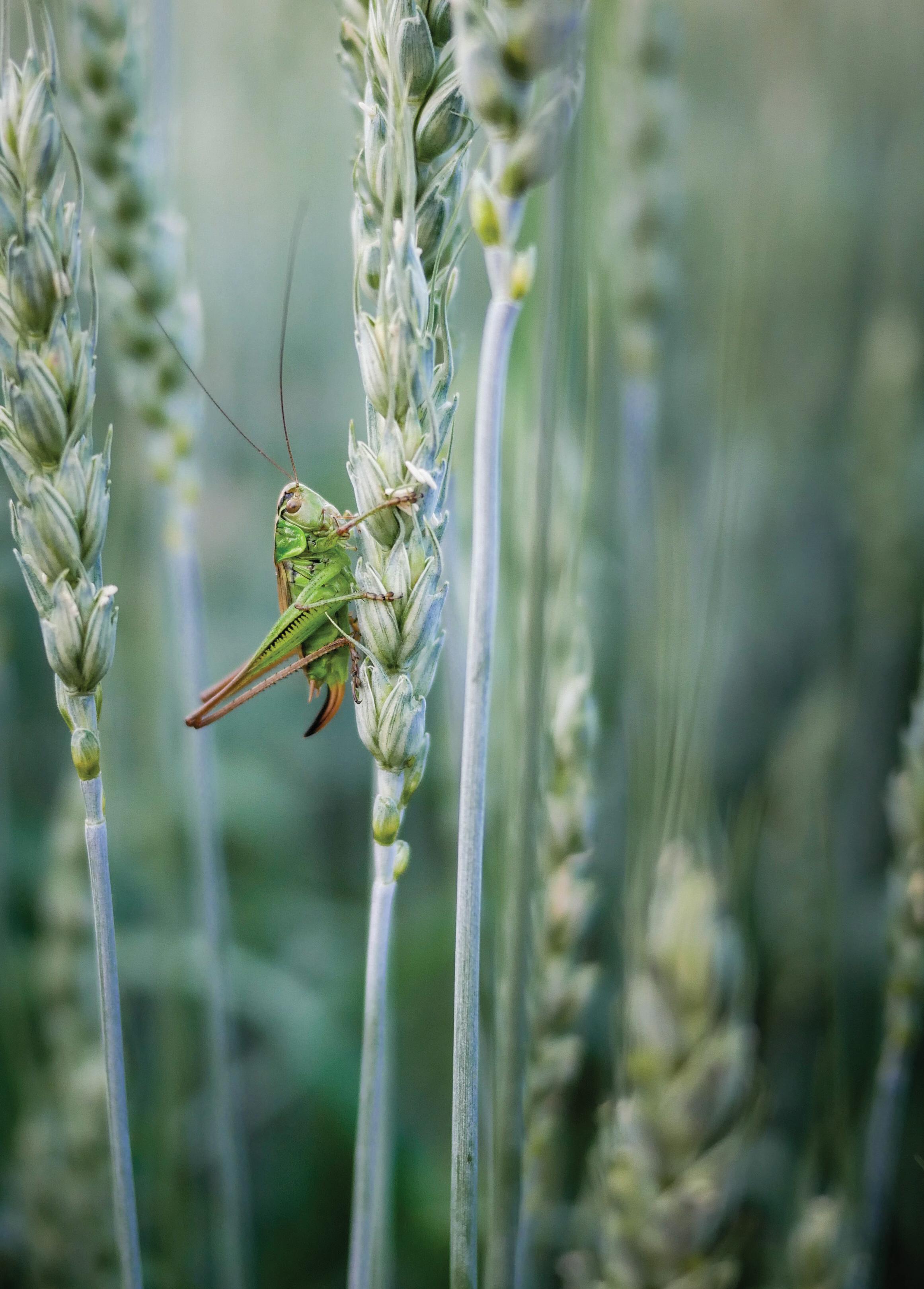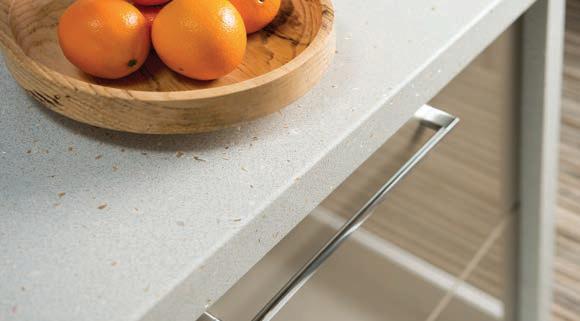














New showrooms now open at Bypass Nurseries, Capel St Mary and Glasswells, Ipswich
















New showrooms now open at Bypass Nurseries, Capel St Mary and Glasswells, Ipswich
Essential roof repairs have now commenced at Holy Trinity Church, marking the first visible step in the long-anticipated regeneration of Colchester’s oldest standing building.
Located in the heart of the city, the 11th-century treasure is a cornerstone of Colchester’s heritage. Thanks to support from The National Lottery Heritage Fund and other partners, the building is set to undergo a multi-million-pound transformation that will secure its future as a vibrant community and cultural hub.
In the coming weeks, Colchester City Council will submit a full planning application for the Holy Trinity Church scheme. This will seek formal approval from the local planning committee and trigger a period for the city to consider the proposals in detail. If approved – and pending successful funding applications – major works are expected to begin in the summer of 2026.
Cllr David King, Leader of Colchester City Council said: “Scaffolding has gone up and timber frames now protect the ancient headstones - a clear sign that work has officially begun at Holy Trinity Church. This roof repair is the first step in restoring one of Colchester’s most iconic landmarks. The Saxon tower of Holy Trinity has stood for nearly a thousand years, and now, thanks to the support of our community and funders, we’re giving it the future it deserves. This project will ensure the church is not only preserved but reimagined as a space for everyone.”
The regeneration of Holy Trinity Church is part of a wider vision for Colchester’s city centre. With over 15 major projects underway – including the transformation of St Botolph’s Quarter, the new Digital Forum, and




the restoration of Jumbo water tower - the city is on track to look completely different by 2030. Together, these projects are unlocking millions in public and private investment, expanding Colchester’s cultural and tourism offer, and creating a city centre that’s more vibrant, inclusive, and future-ready.
Simon Blaxill, Chair of We Are Colchester, added: “Colchester is changing fast and for the better. From heritage to innovation, we’re investing in the things that make our city special. Holy Trinity Church is a



jewel in our crown, and this project is a powerful example of how we’re working with partners and the public to create a city that’s proud of its past and ambitious about its future.”
The full scheme will see Holy Trinity removed from the Heritage at Risk register and brought back into everyday use as a community hub, operated by St Helena Hospice. It will also a base for bereavement support services, embedding vital social care into the heart of the city. Whilst complementing the ongoing transformation of Trinity Square,
turning the surrounding green space into a welcoming, accessible area for residents, visitors, and wildlife alike.
Originally forecasted as £2.8m transformation, the scheme is now likely to cost around £4.3m. The council are applying for funding through grants. The budget has taken shape as the aspirations of partners, funders and residents have grown over the past year of deeper consultation.








































































































































































































by Clare Chambers
Small Pleasures is a quiet gem of a book that unfolds with the grace of a classic British drama, while packing a modern literary punch. Set in the meticulously rendered suburbs of 1957 southeast London the story follows Jean Swinney, a journalist approaching her fortieth birthday, and stuck writing lightweight ‘women’s pieces’. Her life is defined by routine, duty, and the quiet ache of unrealised dreams.
When she’s assigned to investigate a local woman's claim of a virgin birth, she anticipates a hoax. Instead, she finds herself drawn into the lives of Gretchen Tilbury, her charming daughter Margaret, and Gretchen’s enigmatic husband, Howard. As Jean’s professional curiosity evolves into personal entanglement, Chambers masterfully explores themes of loneliness, desire, and the societal constraints of postwar Britain.
The novel’s strength lies in its subtlety. Chambers crafts a narrative rich in period detail and emotional nuance, where the most profound moments are found in the quietest exchanges. Jean’s internal struggle between duty and desire is portrayed with a tenderness that resonates deeply, making her journey all the more poignant.
While the mystery of the virgin birth is central to the plot, it's Jean’s personal awakening and the intricate dynamics between characters that draw us in.
Small Pleasures is a novel that lingers, reflecting on the small joys
and quiet tragedies that define a life. It’s a reminder that the most extraordinary stories often emerge from the most ordinary lives.
The Book of Stolen Dreams by David Farr
This is a dazzling children’s debut that sweeps readers into a richly imagined world where courage and imagination are the keys to survival. Set in the oppressive city of Brava, siblings Rachel and Robert Klein find themselves thrust into a perilous adventure after their librarian father entrusts them with a mysterious, forbidden book. Their mission: to find the missing final page and prevent the book from falling into the hands of the tyrannical ruler, Charles Malstain.
Farr's screenwriting and theatre credentials are very much present as he brings a cinematic flair to his storytelling, deftly balancing moments of suspense with real humour and warmth.
There are many parallels to be drawn with certain chapters in history as well as more current

events. Farr paints a compellingly grim picture of life under highly restrictive rules and regulations where almost every kind of fun is outlawed, and teaching takes place under the tightest of rules. In spite of this, Rachel and Robert's spirits shine like beacons as they embark on their adventures.
The Book of Stolen Dreams is more than just a fantasy adventure; it's a poignant exploration of the power of stories and the resilience of the human spirit. The suggested age range is 8-12 but quite frankly this 40-year-old adored it as much as her son.
By Tash Donovan


Not only will you be giving a brighter future to teenagers and young adults with cancer but also a future to bees, wildlife, and the environment.






























Colchester Castle Museum is pleased to announce today that it has been recognised in Tripadvisor’s® Travellers’ Choice® Awards for 2025, ranking in the top 10% of things to do worldwide!
As the world’s largest travel guidance platform, Tripadvisor has unparalleled authority with travellers and diners. This award is based on genuine feedback from anyone in the community who has visited and left an authentic, first-hand review on Tripadvisor over a 12-month period, making it a valuable and trustworthy designation of travellers’ favourites.
Cllr Lee Scordis, Portfolio Holder for Culture, Heritage and Environment, said: “We are incredibly proud of Colchester Castle Museum and the role it plays in celebrating our rich heritage. I’d like to thank all our visitors for their continued support and thoughtful feedback – it’s vital in helping us grow and improve. The recognition we receive is a testament to the dedication of our staff and the enthusiasm of our community. Your support
ensures we can keep delivering an exceptional experience while preserving history for future generations.”
“Congratulations to Colchester Castle Museum on its recognition in Tripadvisor’s Travellers’ Choice Awards for 2025,” said Kristen Dalton, President, Tripadvisor. “Ranking among the top percentage of attractions globally means you have made such a memorable impact on your visitors that many of them took time to go online and leave a glowing review about their experience. We hope this recognition continues to drive business to you in 2025 and beyond.”
Discover more about Colchester Castle Museum here: www.colchester.cimuseums.org.uk and check out Trip Advisor reviews here:
https://www.tripadvisor.co.uk/ Attraction_Review-g190735d519595-Reviews-Colchester_ Castle_Museum-Colchester_Essex_ England.html









I was sitting in a pub garden with my two closest friends, enjoying cold drinks in the sun when talk turned to which was the worst month of the year. “Well, I hate August!” declared Lucy,
“Ugh! Me too,” agreed Alice, and they both went on to explain (in some detail) why August sucks.
“It’s the end of summer but not quite Autumn. The plants in my garden are crispy and most have gone over. School is about to restart, and I’ve not even thought about new shoes and uniform.”
“Yeah…And most of the elaborate plans I had for doing things with the kids this summer never really came to anything. August just feels like a long list of obligations.”
I was surprised. I like August, and not just because it’s my birthday (oh dear, maybe that was one of the obligations Alice referred to). If you feel like August is your least favourite month, please let me advocate for a moment on its behalf.
New Start –August has lots in common with January. It feels like a new start!
As a child I remember new shoes, clothes, and stationery (oh the thrill of new colouring pencils). I could reinvent myself with a new teacher and unblemished exercise books. August, like January was full of potential and possibilities. So what if I’d broken all my New Year’s resolutions before the last of the festive fairy lights had been packed away; August was another chance. This academic year I could be a cooler, kinder version of me, who worked harder and achieved better grades! Call me a cock-eyed optimist but even as an adult, August still evokes those feelings for me.
New Season –Ok, Autumn doesn’t start until September, but August is the prelude. Temperatures are dropping and you can ‘smell’ the difference in the mornings. I adore the heat and freedom summer but by the middle of August I’m looking forward to opaque tights and craving the calmness and structure of ‘back to school’ days. Summer is more stressful as an adult. As a child the whole summer was mine. I focussed only on fun and friends. Now even though I

love summer frivolity, it has to be fitted around my job. Summer feels fun-but-frantic, so by mid-August I’m anticipating the finish line.
Reset –
No matter what the first 7 months of the year were like, there’s still time to instigate changes. July was the start of the long summer break yes, but really July was just an extension of June, packed with end-of-term chaos: exams, concerts, presentations, school trips and sports days. August on the other hand provides the mental space for bit of a soft reset, to evaluate how the first half of the year went and think about what
You’ve probably seen bubble tea shops popping (no pun intended) up on a high street near you recently. Bubble tea, also known as boba, is a colourful, chewy drink, that’s taken the UK by storm in recent years. Originally from Taiwan in the 1980s, it was created by blending milk tea with tapioca pearls, which are small, chewy balls made from cassava starch. The drink is typically served cold, with a wide straw to slurp up the “bubbles.”
Classic bubble tea is made with black tea, milk, sweetener, and tapioca pearls, but modern versions are highly
customisable. You’ll find fruity teas, green or matcha options, flavoured jellies, and popping boba (juice-filled spheres).
Bubble tea began gaining popularity here in the late 2010s, especially in larger cities with strong East Asian communities and university populations. Its appeal spread quickly thanks to the drinks’ Instagram and TikTok appeal. Trendy tea chains like Bubbleology and Gong Cha, began to open shops around the country, and now it’s widely available on most high streets.

While the teas are popular, they’re pricey, and they’re not exactly health drinks. Most shop-bought bubble teas are loaded with sugar, artificial flavours, and sweetened condensed milk, with some coming in at 400 calories per cup. The Tapioca pearls themselves are comprised mainly of carbohydrates and have little nutritional value, and the portion sizes are often huge.
If you’re tempted, but want to try a healthier option, many stores offer reduced sugar, plant milk, or fruit tea

went well, and what needs to change.
“August resolutions should definitely be a thing,” I finished happily, before realising my friends were now regarding me with something akin to a mix of incredulity and pity.
Well, my besties may not be convinced, but what about you? Are you ready to embrace a fresh start and make a resolution or two? Who’s with me?
By Gemma Brown

bases, so you can tailor the drink to your taste and diet.

Preparation Time: 5 mins
Cooking time: 20 mins
Servings: 2
Ingredients:
2 large salmon fillets with the skin on
1 small onion, finely diced.
1 tbsp olive oil
3 large garlic cloves crushed or finely chopped.
Rub the salmon fillets with oil and place them skin side down on the greaseproof paper.
Season the fillets well with salt and pepper.
Place the salmon into the oven for 18-25 minutes. cooking time will depend on the size and thickness of the salmon fillets used.
While salmon is cooking, heat the olive oil in a large pan over medium heat. Fry the onion gently until soft
120g fresh spinach
150g mushrooms (any type but wild are great) sliced.
60ml cup white wine
170ml double cream
Salt
1/2 tsp chilli flakes (optional)


and translucent. Add the garlic and mushrooms and cook for another minute, then add the spinach. Cover and let the spinach cook down, stirring occasionally.
Once spinach has wilted, drain off the excess liquid.
Return to the stove and add white wine. Simmer for about a minute.
Remove from the heat, add the cream, and mix everything well. Season with salt and chilli flakes.



Return to a low heat and allow to heat through for a couple of minutes.
When the salmon is cooked, remove it from the oven and place it on preheated plates.



Pour the creamy spinach and mushroom mixture over the salmon. Serve with a green salad


If you've ever wandered through a traditional English cottage garden in midsummer, chances are you've caught sight of astrantias - those charming, understated flowers that quietly hold their own among the showier blooms. Also known as masterworts or the rather quaint “Hattie’s pincushion,” these perennials are the perfect blend of beauty and practicality. With their starry, pincushion-style blooms in shades from soft white to dusky pink and deep ruby, they’re a treat for the eye - and for the bees and butterflies, too!
Astrantias bloom their hearts out from June right through to August, giving us gardeners a generous season of colour, not to mention plenty of nectar for our insect friends. They’re absolutely brilliant for shady spots, especially those damp, awkward corners where other plants might sulk. Moistureretentive soil is their sweet spot, but don’t worry if your patch is on the drier side - they'll still do well
with regular watering and a good mulch.
Speaking of soil, astrantias are fans of the rich stuff : well-rotted manure, home-made compost, or leaf mould worked into the ground before planting. Pop the plant into a prepared hole, firm it in, and water generously. Keep up the watering through the first summer, especially if your soil’s particularly free-draining. Once settled, they’re pretty self-sufficient, and wonderfully resistant to slugs and snails, which is a real bonus in my own garden!
If you want to encourage a second flush of flowers (and who wouldn’t?), cut them back after their first round of blooming. Give them a proper haircut again in autumn or early spring to keep them looking tidy.
Astrantias can be divided in spring. Lift a clump, gently prise it apart with your hands or a fork and

replant the sections right away. If you’ve got the patience, they can also be grown from seed - either collected from your own plants or from a packet under cover in spring.
Astrantias are mostly trouble-free, though occasionally powdery mildew can be an issue. Keep them healthy with plenty of water and mulch and bin any mildewy leaves in autumn.
For varieties, try ‘Roma’ for soft pink blooms, ‘Venice’ for a dramatic ruby
red, or ‘Hadspen Blood’ if you’re after something truly striking. For a lighter look, ‘Buckland’ and ‘Alba’ are gentle on the eye and lovely in a pastel scheme.
In all, astrantias are reliable, romantic, and ridiculously easy to grow - a real cottage garden treasure.
Happy gardening,
By Rachael Leverton












Can you find all of the ocean-dwelling life hidden in the grid?

anemone barnacle clam coral crab crustacean gastropod kelp
krill langouste laver limpet manatee murex orca oyster
plankton scallop shark squid starfish volute walrus whelk

If you are, then like me, you’re part of the special minority who make up about 12% of the population.
Handedness arises from a complex mix of factors which include: genetic influences, prenatal development, hormones, birth circumstances, and even season you’re born in!
Studies on twins suggest that genetics account for around 25 % of the variance; the rest likely stems from developmental “noise” in the womb, which refers to the random, unpredictable biological factors that affect how a baby develops during pregnancy. These are non-genetic influences, so they're not inherited, but instead arise from subtle variations in the environment inside the womb. In the context of lefthandedness, developmental noise might include:
Small fluctuations in hormone levels, especially testosterone.
Slight differences in blood flow to parts of the brain.
Minor changes in how cells grow or organise on the left vs. right side of the body.
Birth position or events during delivery.
All these random factors can influence which side of the brain becomes dominant for things like language and
ACROSS
1 City of ancestral suffering (9)
6 Evasive about son being comfortable (4)
9 Sue assumes two fellows in charge to be enough (7)
10 Disrupted most of literary film preview (7)
11 Blades appearing when people have a row (4)
12 Note lack of talk about one displaying toughness (10)
14 B in test characteristic of a certain group (6)
15 Calming drug is vet’s idea possibly (8)
18 Reliable-sounding Scottish city (8)
19 They work with a tool (6)
22 Applaud – yes, one goes wild, see (4,4,2)
24 Encourage some of our generation (4)
26 A complex plot’s beginning to engross Peter perhaps (7)
27 Loose rocks by church make an unpleasant sound (7)
28 Advance payment for poet first off (4)
29 Former Blue Peter presenter wearing vest? (9)

motor skills - ultimately determining whether a child becomes left or right-handed, which is why identical twins (with the same DNA) can have different handedness. Biology is not always predictable!
In medieval Europe, being a leftie was linked to witchcraft and evil – ‘sinister’ literally meant left, so children were often forced to use their right hand.
In a right-handed world, everyday tools - scissors, kitchen knives, your computer mouse, are usually designed with right-handers in mind. If you want to know how annoying that is… try cutting along a straight line using normal scissors with your left hand!
Left-handers often bring advantages though, such as improved spatial awareness, creativity, and sometimes even an edge in sports.
Being left-handed is part of what makes me ‘me’. I like being a leftie, even if scissors are my nemesis!
By Kye White
DOWN
1 Stick it to the end, leaving after the others (4,3)
2 Tent fire destroyed one Egyptian queen (9)
3 A family related by blood (4)
4 Two letters read aloud in tent (6)
5 Crooked Eritrean lawyer may ask for one (8)
6 Generous cleaner’s given one board (10)
7 Ring lost in bar or beauty parlour (5)
8 Country producing oil we hear (6)
13 Middle name put first in place for telephone operators (4,6)
16 I close home – that’s serious (2,7)
17 E.g. insert mobile numbers (8)
18 For example, American backed Charles (4,2)
20 Chap is to walk with female (7)
21 Relative keeps us in money (6)
23 Decorate for a party with sailors (5)
25 Exam offers alternative to a student (4)




Summer is peak bug time, and whether we’re enjoying a walk in the countryside or a BBQ in the garden, insect bites and stings can be an unfortunate seasonal nuisance. So, let’s demystify bites and stings.
We’ll start with why bites and stings cause pain or itching? Well, when an insect bites or stings you, it introduces substances into your skin. Biting insects like mosquitoes inject saliva, which contains proteins that stop your blood from clotting while they feed. Your immune system sees these proteins as foreign invaders and releases histamine, a chemical that triggers inflammation, itching, and redness.
Stinging insects like bees and wasps inject venom. This venom can cause pain, swelling, and irritation. In some cases, it also triggers a more intense immune response, leading to more significant swelling or even allergic reactions.
Some people react more strongly than others. Local swelling is common and usually harmless, but for those with allergies, a
sting can cause a condition called anaphylaxis. This is a severe, life-threatening allergic reaction. Symptoms may include difficulty breathing, swelling of the face or throat, a rapid heartbeat, dizziness, or a drop in blood pressure. If you or someone else experiences these symptoms, seek emergency medical attention immediatelycall 999.
However, for most bites and stings, simple home care is effective:
• Clean the area with soap and water to reduce the risk of infection.
• Apply a cold compress to reduce swelling and numb the pain.
• Avoid scratching because this can break the skin and lead to infection
You can also use over-the-counter (OTC) treatments available from a pharmacist:
• Antihistamine creams (like chlorphenamine or diphenhydramine) can ease itching and reduce inflammation.
• Hydrocortisone cream (1%) can help soothe inflammation, especially in allergic-type skin reactions.
• Oral antihistamines can also be

effective if the reaction is more widespread or you’re getting multiple bites.
Insect repellents and wearing long sleeves can help prevent bites in the first place, particularly in highrisk areas like woodlands or near stagnant water.
When should we seek medical help?
• If the swelling or pain is severe and spreading.
• If signs of infection are visible (e.g.
pus, increasing redness, or the skin feels hot).
• If there are signs of an allergic reaction.
• If the sting or bite is inside the mouth or near the eyes or throat.
The majority of Insect bites and stings though annoying, are usually harmless, and knowing how to treat them can keep a summer outing from being spoiled by a sting.
By Louise Addison
How to play Sudoku It’s simple!
Fill in the grid so that each row, column and 3x3 box, contains the numbers 1 through to 9 with no repetition.

You don’t need to be a genius. These puzzles use logic alone. Watch out! Sudoku is highly addictive.

Hoorah! You’ve done it. All the hard work paid off and you’ve passed your A-levels. University beckons, but are you ready?
It’s easy to assume that uni will be ’like school but bigger,’ but that’s not the case.
In school, while you will have been encouraged to do some independent thinking and research, much of what you learned was broken down and served up in manageable chunks.
At university study is fast-paced and students are expected to take responsibility for their own learning. This is a major adjustment for most young people, and many struggle to adapt. A common complaint from higher education tutors is that their students have never learned how to learn!
Stella Cottrell has produced The Study Skills Handbook which I would recommend to all new students. It aims to help you learn how to sort, process, and recall all the information you’ll be required to absorb.
Today’s students also have to grapple with the rise of generative AI. This was not the case even five years ago. Universities are adapting quickly, but a good resource for students is David Meechan’s recently published book Generative AI for Students: The Essential Guide to Using Artificial Intelligence for Study at University. Don’t be put off by the dry title, it’s packed with useful information in an easy-to-follow format, to help student enhance their academic work efficiently and ethically.
At least 60% of first year undergraduates feel out of their depth at times, so you won’t be alone if this happens to you. If you’re struggling, talk to your tutor directly. Most people who work in higher education are passionate about their subject and will be happy to help. Talk to them as soon as the problem arises though, don’t wait until the day before an assignment is due!
Tutorials and seminars are your chance to take the initiative. Make the most of them. Go in armed with any questions and thoughts you have. The more you put into
Learning to drive is a big milestone, and also an expensive one, so finding the right instructor is important.
In the UK, all professional driving instructors must be approved by the Driver and Vehicle Standards Authority (DVSA). Anyone you choose should be an Approved Driving Instructor (ADI) who displays a green badge in their windscreen. Trainee instructors carry a pink badge – they can still teach, but they’re not fully qualified yet.
Consider personal and online reviews, pass rates, and how well the instructor explains things. A good instructor will be calm, patient, professional, and never make you feel anxious or rushed. Red flags include turning up late, being distracted (e.g., using their phone), or pushing you to take a test before you feel ready. If something seems 'off ' it’s a good idea to switch instructors.
Decide whether you want lessons in a manual or automatic car – and

your needs (e.g., small, and easy to park, good visibility, dual controls).
If you can practice between lessons, it's very helpful. Make sure the parent or friend who sits with you, meets the legal requirements though. They must be over 21, have been a qualified driver for at least three years, and insured. It also helps if they are calm, sensible and unlikely to start shouting at you!
Private practice is good for reinforcing what you’ve learned and building confidence in different settings, such as at night, on rural roads, or in the rain!
With the right instructor, you'll be on the way to shedding your L plates before you know it.

university study, the more you’ll get out of it.
If you are neurodivergent, disabled or have a specific learning difficulty like dyslexia, make yourself known to the Student Learning Service. They offer support and run advice sessions.
It’s not just the academic side of life which requires adjustment. You may be moving to the other side of the UK or from the countryside to a city. Try to arrange to spend a weekend in the new area during the summer. Familiarise yourself with the transport system and local amenities and it won’t seem quite as strange when term starts. Think about how you’ll manage your
finances and don’t be too proud to talk your parents about this aspect of independent living. They’ve been through similar situations even if they didn’t attend university themselves.
Finally, university is also about making new friends. Attend any ‘welcome’ events and sign up for one or two clubs. Don’t overcommit yourself in the early days though because you’ll already have a lot to deal with.
Most people look back on their time at university with fond memories. It’s an exciting time. Prepare well, work hard, and don’t forget to enjoy yourself. You’ve earned it.

ACROSS 1 Lancaster. 6 cosy. 9 suffice. 10 trailer. 11 oars. 12 resilience. 14 tribal. 15 sedative. 18 Stirling. 19 pliers. 22 clap eyes on. 24 urge.
26 apostle. 27 screech. 28 ante. 29 singleton
DOWN 1 last out. 2 Nefertiti. 3 akin. 4 teepee. 5 retainer. 6 charitable.
7 salon. 8 Greece. 13 call centre. 16 in earnest. 17 integers. 18 such as.
20 Stephen. 21 cousin. 23 adorn. 25 oral.
When my neighbour Ted, reached 50, he bought himself a shiny new sports car. He still had two teenagers living at home, so the tiny two-seater was not exactly practical. His wife was both incredulous and annoyed. The phrase ‘mid-life crisis’ was heard.
The term mid-life crisis refers to a period of emotional upheaval or self-reflection that typically occurs between the ages of 40 and 60. For some, it can be a time of renewal and personal growth; for others, it brings confusion, restlessness, or a longing for change. But what provokes it, and is it even a real phenomenon?
Mid-life often brings a convergence of life events: aging parents, teenage children, career plateaus, health concerns, and the stark realization that more life may be behind than ahead. These factors can trigger existential questions: Am I happy? Did I achieve what I wanted? Is this all there is?
Other triggers include divorce, job loss, bereavement, or even a milestone birthday. These events
can spark a re-evaluation of our goals, identity, and purpose.
The concept of the mid-life crisis was popularised in 1965 by Canadian psychoanalyst Elliott Jaques, who described it as a period when adults confront their own mortality and reassess their accomplishments. The idea gained traction in the 1970s and 80s, often depicted in the media through impulsive purchases, or romantic affairs.
Men and women can experience mid-life crises differently, shaped by social roles, expectations, and hormones. Men are more likely to seek adventure, or an affair with a younger woman, to reclaim a sense of youth or vitality. Women, particularly after children reach late teens, may reflect on an identity beyond motherhood or grapple with aging and societal invisibility.
But these are generalizations. The emotional experiences - self-doubt, regret, and a desire for reinvention - can affect anyone, regardless of gender.
Is It Even Real? - Psychologists are divided. While many people report going through mid-life transitions, there’s little scientific evidence to suggest a universal phenomenon. In fact, studies show that emotional well-being often improves after mid-life. It may be more helpful to think of it as a mid-life transition period - a natural phase of reflection and change rather than a breakdown.
If you or a partner seems to be in the midst of a mid-life shift:
Try to talk openly about feelings without judgment.
Seek purpose through hobbies, volunteering, or new goals.
Avoid impulsive decisions - give changes time to unfold.
Consider therapy or coaching to explore identity and direction.
Stay physically and socially active, both of which support emotional health.
Prepare to enter a world of legend and wonder as Mythical Creatures, a spectacular new family-friendly exhibition, opens at Colchester Castle on Saturday 26 July 2025. Step into a realm where folklore meets fantasy, and stories leap off the page in an exhibition like no other.
On display within the impressive and historic Colchester Castle, Mythical Creatures invites visitors of all ages to embark on a captivating story quest through time.
Encounter mysterious objects, curious objects, and vivid displays that bring to life the most beloved beings of legend – from a flying Dragon and noble Unicorn to the watchful Griffin and mischievous Mermaid.
Drawing inspiration from medieval tales and local folklore, this exciting exhibition weaves storytelling and myth into a wondrous experience. Visitors will discover the origins of these fantastic creatures through hidden clues, and intriguing artefacts, while uncovering how they have shaped storytelling through the centuries.
A highlight of Mythical Creatures is its extraordinary collection of objects, including rare and unique items on loan from regional and national museums including the British Museum and Natural History Museum, as well as Colchester Zoo. These fascinating loans – ranging from ancient artefacts to natural history specimens including a griffin’s claw, unicorn’s horn and Cyclops’s skull, bring the mythical world to life, sparking imagination and curiosity.
Councillor Lee Scordis, Portfolio Holder for Portfolio Holder for Culture, Heritage and Environment said: “We’re thrilled to welcome visitors to our new and exciting exhibition, Mythical Creatures, set within the historic walls of Colchester Castle.
“Mythical Creatures is more than an exhibition – it’s a fascinating adventure through imagination, rooted in the rich tradition of legends passed down through generations.
“Behind the scenes, staff and partners have been working hard for many months to deliver this impressive exhibition, and we can’t wait to open the doors for visitors

Ultimately, a mid-life “crisis” can be reframed as a chance to realign with what truly matters. With support and self-awareness, it can mark the beginning of a more meaningful second act.
By Andrew Schilling
and magic to life at

to experience this unique and fascinating exhibition in our most historic building, Colchester Castle.”
During the exhibition period, a programme of complementary events will be taking place, including storytelling sessions, expert talks, family tours, concerts, and costumed characters. With something for every age and interest, Mythical Creatures promises to be a must-see family experience of the year.
Don't miss your chance to enter the world of wonder, where every corner tells a fascinating tale and sparks visitors’ interest and imagination!
Mythical Creatures is included in standard Castle admission and will be on display from 26 July 2025 –22 February 2026.
Find out more and book your visit today at www.colchester.cimuseums.org.uk/ events/mythical-creatures

The waters around the property market may be choppy, but with the Michaels crew at the helm, we’ll get you to where you really want to be... simply pop in or call our Colchester office to arrange a free mortgage health check and to register with us for updates on property prices and interest rates today.